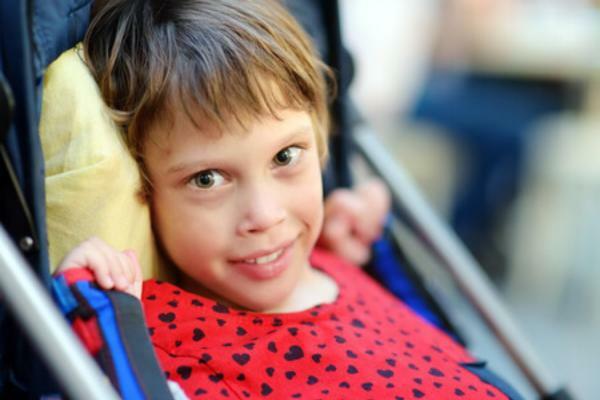
Conversion disorder, formerly known as hysteria or conversion hysteria, is a mental condition that is characterized mainly by suffering from symptoms physical (motor or sensory) whose origin cannot be explained or resolved with a study or a physical analysis, it is for this reason that it is difficult to diagnose these patients. These symptoms usually appear after having experienced a traumatic event or as a consequence of suffering from other mental disorders and their explanation. psychological is believed to be related to an inability to resolve and face intrapsychic internal conflicts that, as a consequence, manifest themselves in physical. In addition, its symptoms can range from paralysis of a limb, seizures to speech and swallowing disorders, making it a dangerous disorder for the health of those who suffers from it. It is for this reason that, in this Psychology-Online article, we will tell you what exactly is conversion disorder, its signs, symptoms and treatment.
Index
- What is conversion disorder according to DSM and ICD?
- Signs and symptoms of conversion disorder
- Difference between conversion and somatization disorder
- Difference between dissociative and conversion disorder
- Causes of conversion disorder
- Treatment of conversion disorder
What is conversion disorder according to DSM and ICD?
The conversion disorder, is a specific form that is classified within somatoform disorders or somatic symptom disorders, which affects the voluntary central nervous system. This disorder is characterized by the appearance of symptoms that affect motor or sensory functions and that suggest a neurological or medical disease.
The symptom not intentionally produced or simulated and causes significant discomfort or deterioration in the social, occupational or other important areas of the patient's life.
It is a disorder that appears more frequently in women than in men and the appearance tends to be in adolescents and young adults.
Signs and Symptoms of Conversion Disorder.
Next, we detail the most common symptoms in patients suffering from a conversion crisis:
- Paralysis of a member of the body, usually an arm or leg.
- Loss of sensation in a part of the body.
- Swallowing difficulties.
- Speech difficulties.
- Lack or difficulty of coordination and balance.
- Loss of a sense, such as blindness or deafness.
- Tingling or tingling in any part of the body.
- Convulsive episodes
It is very important to note that the symptoms tend to be brief and involuntary, that is, the person who suffers does not act consciously or fake them. Conversion disorder can appear in a specific way, with a single episode throughout life or it can be repeated sporadically.
Difference between conversion and somatization disorder.
These two disorders are within the same DSM-V classification, somatic symptom disorders and related disorders. Although both have in common that they are unconscious physical expressions of a conflict or an internal psychological problem, are two different disorders that can sometimes be confused or not know exactly how to make a diagnosis differential.
The somatization disorder characterized by physical symptoms that cause discomfort and pain and that they are persistent over time, unlike conversion disorder, which tend to be shorter. In addition, in somatization, recurring thoughts regarding the severity of the symptoms and as a consequence, the anxiety that cause them, are very important characteristics when it comes to differentiating them.
In the disorder conversion, these thoughts are not present and is characterized by a loss or change in physical functioning, such as immobility of a part of the body or a temporary loss of speech or hearing, among other symptoms.
If you want to know more about what somatize is, in this article we explain the causes and types of somatization.
Difference between dissociative and conversion disorder.
We can find some similarities between these two disorders, but we have to clarify that they are two independent disorders that differ from each other for certain reasons.
The dissociative disorders involve a disconnection, loss of contact with reality, lack of continuity between thoughts, which appear as a reaction to having suffered a severe trauma. These patients, in the face of this very painful situation and of great emotional impact, repress these memories using resources such as amnesia or, in other cases, creating diverse personalities alternatives.
Instead, in the conversion disorderAlthough the cause of the appearance of both disorders is usually similar, the symptoms are primarily physical, unlike the dissociative, which are mostly psychological or mental.
Causes of conversion disorder.
As mentioned above, the main cause of the appearance of the symptoms of this disorder is the fact that having experienced a traumatic or very stressful event. The defense against these situations of great emotional impact, is formed unconsciously and manifests itself symptomatically as a specific neurological affectation. Furthermore, it has also been observed that patients with depression, personality disorders and dissociative disorders they are more likely to develop this disorder. It can also appear in apparently healthy people due to being suffering from high levels of stress, having a family history with a relative with conversion disorder, having suffered sexual and / or physical abuse during childhood or another very traumatic event in the past or having received a very overprotective education. In this article we talk about parenting styles and their consequences.
Treatment of conversion disorder.
There are cases in which patients recover naturally and spontaneously, symptoms begin to improve and everything returns to normal. Even so, a great majority of cases of conversion crisis require different treatments so that the symptoms disappear. Next, we will detail the most used treatments in conversion disorder:
- Psychological treatment: it is very effective as it can help you adopt new ways of managing and perceiving stress and avoiding new episodes. In addition, through psychotherapy, work can be done with the main cause or internal reason that is causing the physical symptoms.
- Pharmacotherapy: different studies have concluded that antidepressant drugs tend to be very effective with patients with a conversion disorder, they are basically used to improve and speed up the recovery of the person suffers.
- Rehabilitation treatment: physical therapy turns out to be very important in certain patients to improve and regain mobility in the limb that has been affected.
This article is merely informative, in Psychology-Online we do not have the power to make a diagnosis or recommend a treatment. We invite you to go to a psychologist to treat your particular case.
If you want to read more articles similar to Conversion disorder: signs, symptoms, and treatment, we recommend that you enter our category of Clinical psychology.
Bibliography
- American Psychiatric Association. Conversion disorder (functional neurological symptom disorder). Diagnostic and Statistical Manual of Mental Disorders: DSM-5. 5th ed. Arlington, VA: American Psychiatric Publishing; 2013:181-183.


